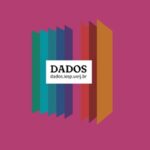By Ana Cláudia Puggina, professor, researcher, Universidade Guarulhos (UNG), Guarulhos, SP, Brazil
The authors highlight that Joy Therapy, Laugh Therapy or Laughter Therapy is a therapeutic method that exists since the 1960s. The physician Hunter Adams, called “Patch Adams” propagated it. Since he was a student, he had already implanted the method in hospitals and schools. Laughter has the ability of decreasing the harmful effects that stress creates in the organism. When a subject laughs, his/her parasympathetic system acts in the immune system through enkephalins, thus increasing the concentration of antibodies and relieving pains caused by the sympathetic system. Additionally, the level of serum cortisol decreases, the brain releases endorphins, which are substances that relieve pain and ensure a sensation of well-being. Laughter also provides benefits to the subject regarding social aspects. It improves people’s connections and clarifies interpersonal communication; therefore, it becomes a nonverbal communication of well-being. Nonverbal body language brings several messages to good watchers through the acts of completing, replacing or contradicting the verbal language; so, the health professional is in charge of noticing such signs and interpreting them. Thus, one of the ways of minimizing the harmful effects of hospitalization is playful activities, which is a strategy that helps children to express their own feelings. Hence, the study from the Faculdade de Medicina de Jundiaí was carried out with the aim of learning more about the effects of the playful interaction with clowns in nonverbal communication and physiological parameters of hospitalized children.
A study was conducted from November 2014 to March 2015 in the Pediatric Unit of a university public hospital, including 41 children aged 2 to 11 years old. The study did not include children with intellectual disability and blindness due to the difficulty of their interaction with clowns and of identifying the pain facial scale drawing. A researcher wearing common clothes informed the children about the measurements. After checking their vital signs and early observation of the nonverbal communication, a playful interaction of 20 minutes took place with students who are members of the Joy League of the Faculdade de Medicina de Jundiaí. The researcher observed and noted the nonverbal language throughout the interaction. Then, she checked once more the children’s vital signs.
The authors show that there were statistically significant alterations during the comparison of means before and after the interaction. After the playful interaction, the systolic and diastolic pressures increased and the pain decreased. “The nonverbal behavioral changes found in children who interacted with clowns show the effectiveness of such playful activity as a therapeutic resource. Children, in general, were more relaxed, open-minded, and smiley. The intervention was capable of modifying the initial context,” states Ana Claudia Puggina, PhD in Nursing and one of the research authors.
According to Ana Claudia, only a few scientific studies have sought to investigate the effects of clown interaction using objective indicators (vital signs and nonverbal communication). “This study brings a pertinent analysis of the playful interaction with clowns as a therapeutic resource to minimize the effects of a stressful environment during hospitalization, to improve the children’s emotional condition, and to decrease pain perception. It contributes to popularize the scientific knowledge, because the study objective, i.e. playing, is an important therapeutic resource to children’s development, with low cost and viable in the hospital environment,” highlighted Ana Cláudia Puggina.
To read the article, access it
ALCANTARA, P.L., et al. Efeito da interação com palhaços nos sinais vitais e na comunicação não verbal de crianças hospitalizadas. Rev. paul. pediatr. [online]. 2016. vol. 34, no. 4, pp. 432-438, ISSN: 1984-0462 [viewed 08 January 2017]. DOI: 10.1016/j.rppede.2016.02.011. Available from: http://ref.scielo.org/cjwrdf
External link
Revista Paulista de Pediatria – RPP: <http://www.scielo.br/rpp>
Como citar este post [ISO 690/2010]:



















Recent Comments